Peach is a color of simplicity, yet peaceful and elegant at the same time. A naked color that can speak a thousand words without grabbing the spotlight. Wearing peach colored gemstones expresses yourself in a subtle way otherwise very hard to achieve.
A very specific amount of shades of pink and yellow must come together to form the peach color. A rare natural occurrence coming alive inside an even rarer gemstone is in fact a marvel. Another reason why peach colored gemstones are highly sought after by true fashion lovers.
The world of gemstones is ruled by diamonds, blue sapphires, and rubies which are well known even to the amateurs. Peach is on the other hand little known even to the seasoned gem enthusiasts.
While some precious stones are inherited with the peach color, some arrive at peach color with the combination of lighter shades of its original color and with little help from the optical luster. Let’s look at what are the gemstones that are inherited with this magnificent attribute that looks gorgeous on any ring or jewelry.
1. Morganite
Morganite is the king of peach colored gemstones. The best naturally formed peach color is often found in well-cut morganites. Morganite is essentially beryl. The most well-known beryl stones are aquamarine and emerald. While belonging to the same family material, morganite displays a pastel light pink that very closely resembles peach color.
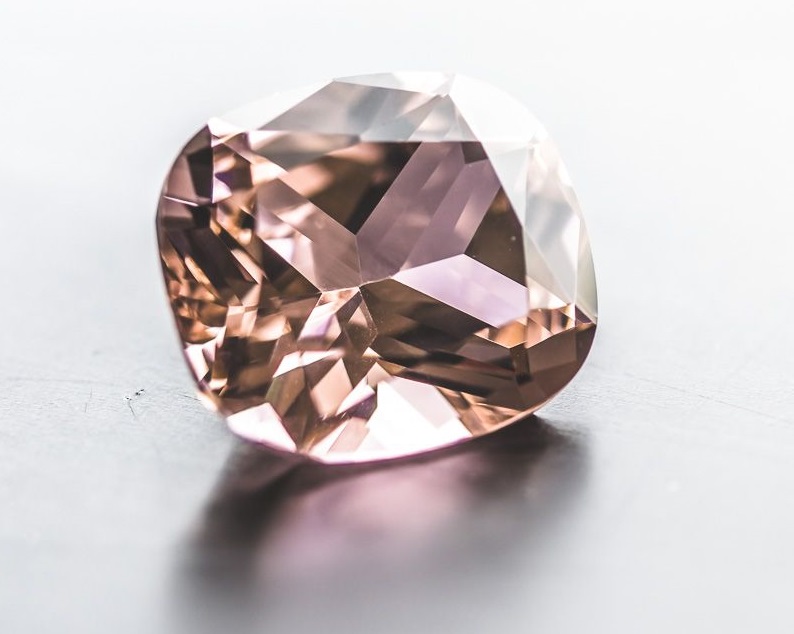
Traces of manganese on its original composition gives the color to this stone. Morganites are highly pleochroic, so looking from different angles cause the stone to alter its color. Some of the originally lighter pink stones are often treated to intensify the color resulting in a stronger pink and purplish look. The best peach color is however available on the untreated morganites.
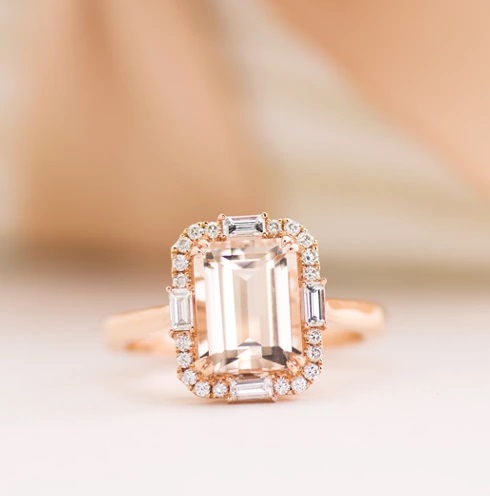
An interesting fact to know is that the name morganite was given to this gemstone as an honor to the legendary financier J. P Morgan. Morganites are frequently found in Brazil and often in large sizes ranging up to roughs weighing over 1 kilo. Therefore the morganites are readily available in the international gem market for affordable prices. 1 carat is usually priced between 200 to 300 US dollars depending on the quality factors. You can also find synthetics for a much cheaper price tag with the same material properties.
Morganite is quite tough material having a score of 7.5 – 8 in Mohs scale just behind sapphires. Thus it has good durability for everyday wear jewelry. Overall a good peach colored gemstone that performs exceptionally well in all the parameters.
2. Peach Colored Sapphires
Natural corundum comes in many different colors. One of the highest valued precious stones that can exhibit the most brilliance when carefully cut. The rough that is used to cut the stone gets the highest value when it was marketed as shades of well-known sapphire colors. Therefore the peach colored sapphires may have been called differently. Those regular colors could range from perfect peach to shades of pink, purple, yellow, and sometimes Padparadscha.
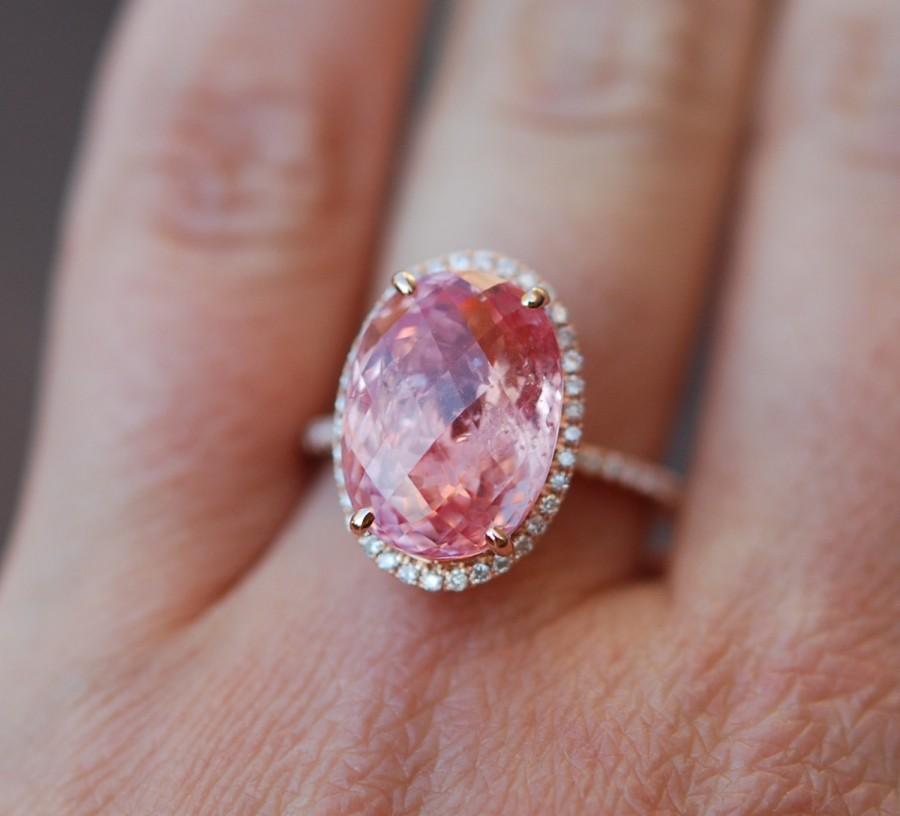
Sapphire is the hardest material after diamond scoring 9 on the Mohs scale. Therefore it is very much durable and wearable withstanding the tests of time. Sapphires are found in Australia, India, Madagascar, Brazil, USA, Vietnam. However, one of the most sought-after varieties is found in Ceylon, modern-day Sri Lanka.
The highest valued sapphires are Padparadscha and blue sapphires having a market value of 1,000 – 1,500 dollars per carat. The lighter the shapes the cheaper the price point is. This is good news for peach lovers. The lighter shades of pink, yellow, and purple sapphires that closely resemble peach color may cost anywhere between 200 – 500 dollars per carat depending on the other factors like clarity, cut, and overall carat weight. This is a bargain price given that you are getting an extremely durable material.
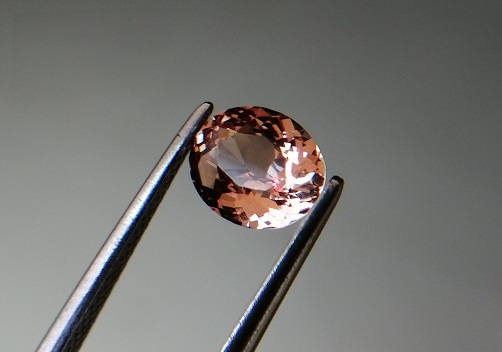
There are ample amounts of synthetic and fake sapphires in the market circulation, however these are predominantly for high priced, blues and rubies. It would be very rare for someone to make a synthetic peach colored sapphire due to its comparatively less market potential.
The heat treatments and other treatments are done to induce the color of the sapphire which will not serve the purpose as far as peach color is concerned. Therefore the peach sapphire you buy could most likely be a natural untreated one. But always look for an independent certificate when buying anything for a higher dollar value, just to be on the safe side.
3. Mahenge Garnet
Mahenge is a region in Tanzania where this particular variety of garnet is frequently found. These are also known as Malaia or Malaya garnets. Among some of the more popular garnets like Rhodolite and Spessartite garnets, the Mehenge garnets were not very well received during the early days due to its pale color compared to more popular pinkish-red and orangish-red respectively.
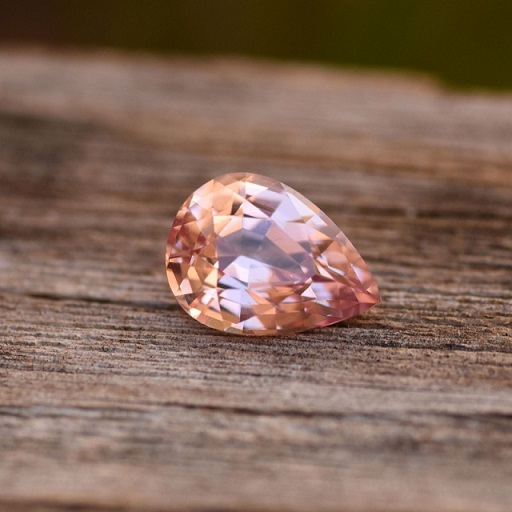
Mahenge garnets were sometimes discarded due to its pale and pastel color during the time when intense, high color-saturated gems were the name of the trade. However as the saying goes ‘everyone has its own time’, the peach-colored Mahenge garnets started to gain traction lately and now quite popular in Europe and the USA.
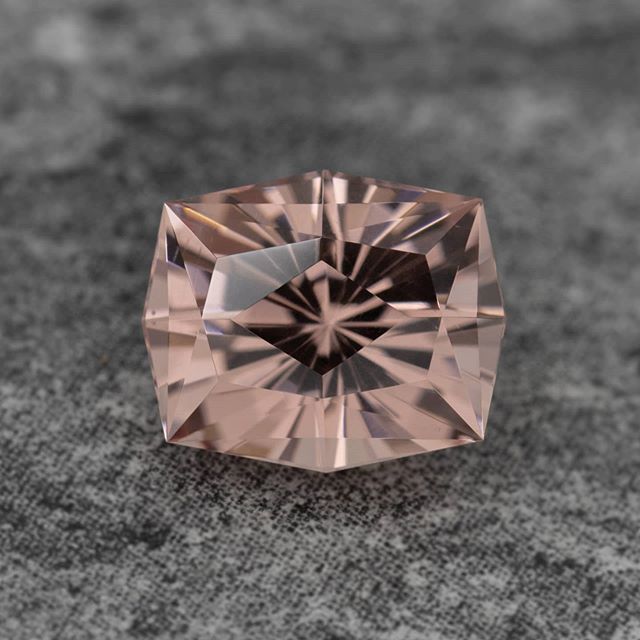
While Mahenge garnets come in different shades of purple and light red, the perfect peach is now priced above 200 dollars per carat, sometimes even more. The price point of Mahenge garnet fluctuates a lot due to its newly attained fame. The value someone could consider this stone to be is entirely up to personal preferences. Many gem lovers still like to go for high color intense stones. If you are a peach lover, which I guess you are, you can find a cheaper price with a bit of research.

Garnet in general scores between 6.5 to 7.5 on the Mohs scale. This makes it pretty strong, but as not much as sapphires or diamonds. Jewelry made with garnets can last for a long time if you do proper care. Peach garnet made pendants and rings are quite popular due to its elegance.
4. Peach Moonstone
Moonstones are long been known for their more popular bluish shades. But some of you may not know that moonstones are found in perfect peach color as well. Moonstones are gifted with the rare optical feature called ‘adularescence‘. The light that gets reflected back from a moonstone is scattered due to the multiple layer structures that happen to be in the distance the same as the wavelength of the visible light. This effect gives it a moon-like view, why these are called moonstones.
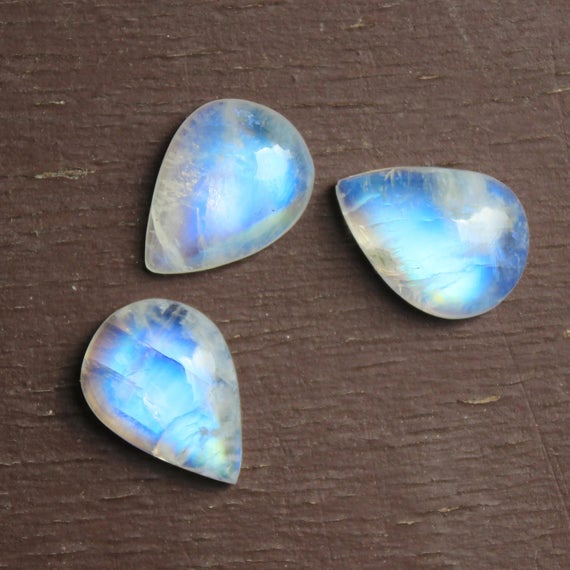
The peach colored moonstones however tend to be more opaque than the bluish stones which are more translucent. Therefore unlike the regular peach colored gemstones mentioned above, the peach moonstones are usually cut in fine cabochon to enhance the color.
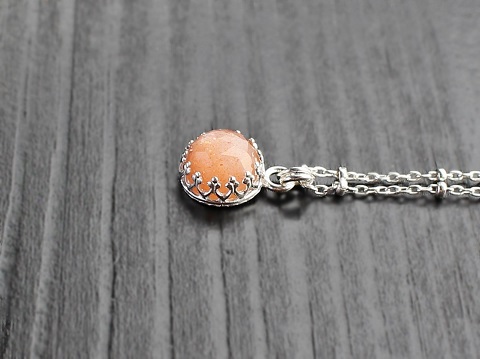
You will often find beaded necklaces and bracelets made from peach colored moonstones. Ranging from 6-6.5 in Mohs scale, moonstones are a good and durable peach colored gemstone for your jewelry. The opaqueness gives it a unique touch of art to enhance the simplicity and glamour.
Peach colored moonstones are quite inexpensive. You can find a good perfect peach for a few bucks in the market. There is an obvious lack of fine jewelry made out of peach moonstones due to the lower market value, but you can always try making your own gemstone ring.
5. Peach Colored Quatz
The last candidate for the peach colored gemstones is quartz. Unlike the moonstone, peach colored quartz may appear almost completely opaque. Made of silicon oxide, quartz is abundant in nature. Fine rose quartz and peach quartz are somewhat rare but very inexpensive.
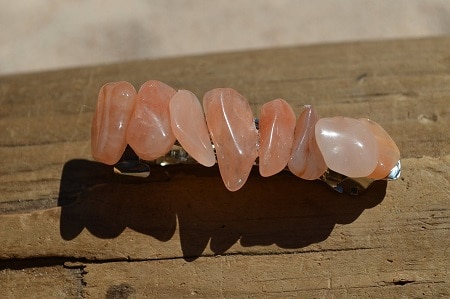
Quartz is more often used for industrial uses than jewelry making. But this is one of the few naturally occurring peach colored gemstones. Though it scores 7 in the Mohs scale, the structural weaknesses can damage the stone quite easily. Therefore the jewelry made of peach colored quartz should be worn carefully especially to avoid impact forces.
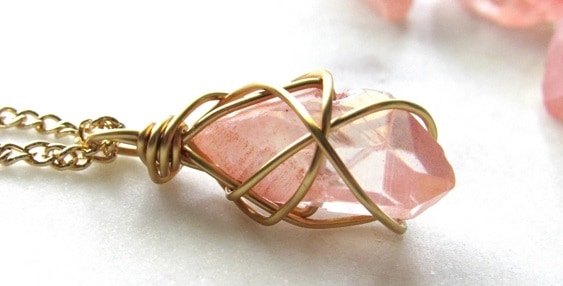
Peach quartz is used in its crystal form to make some of the fine art jewelry that enhances the character and modernity. The most inexpensive out of this list, but this peach colored gemstone could look truly amazing and different from the traditional gems.
Recent Content
It is no secret that jewelry artisans worldwide love the exquisite sapphires mined in Sri Lanka. These colorful nature's treasures are well known as 'Ceylon sapphires' in the gemstone trade....
Well, there are many reasons why lab-created sapphire has grown in popularity in the recent past. As with many other industries, the gem and jewellery industry has also been adjusting itself to...

